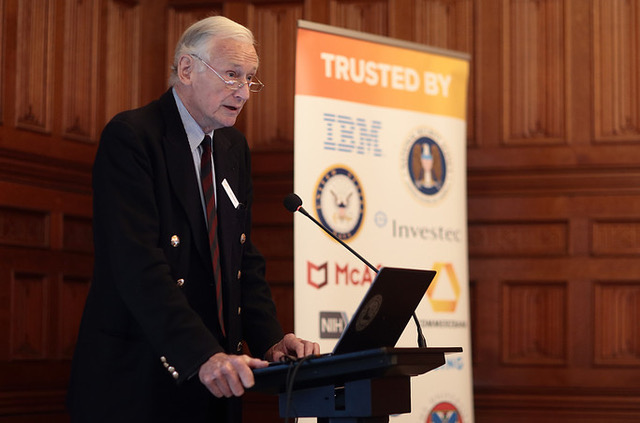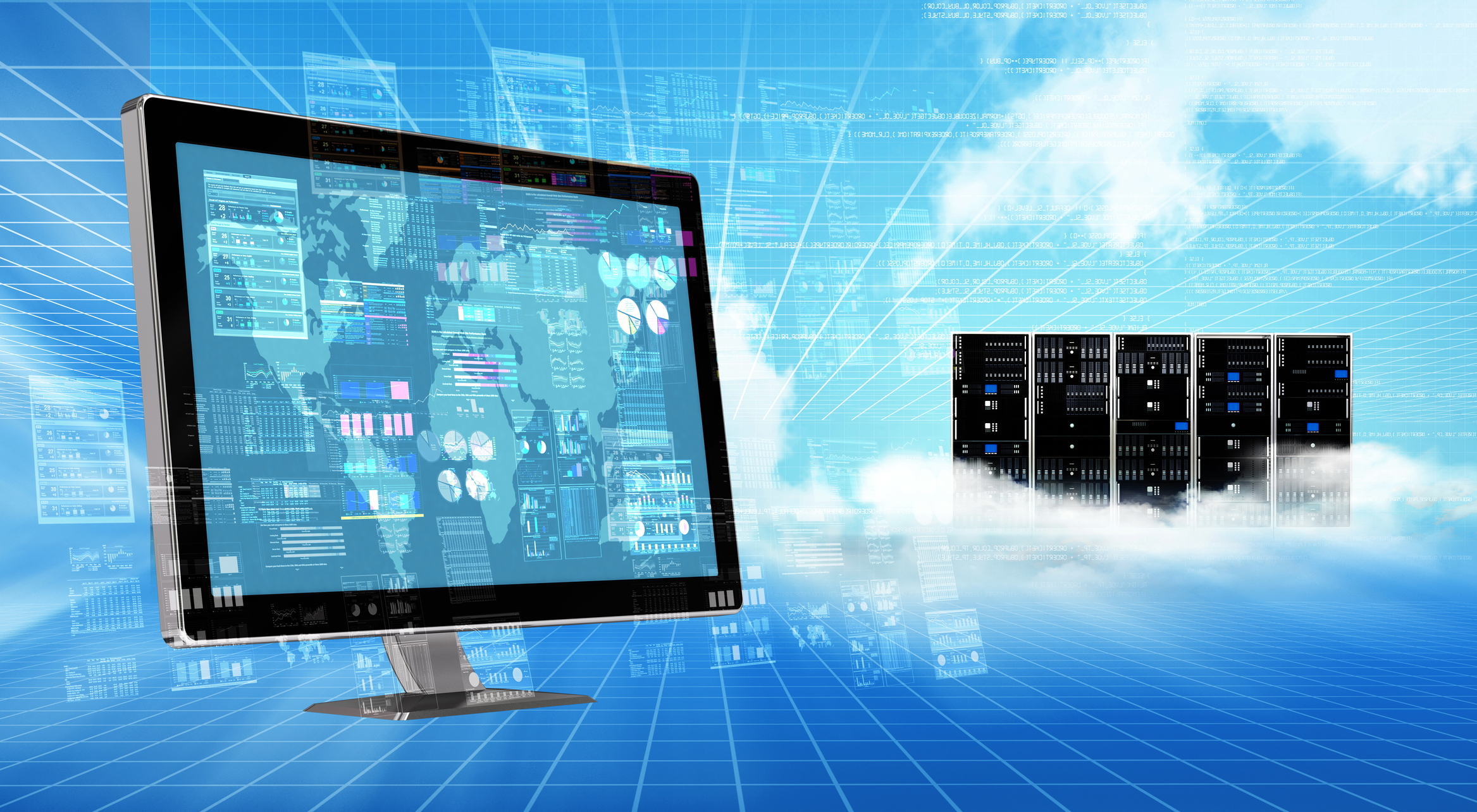Bridgeworks CEO, David Trossell features in this article on IT PRO PORTAL about healthcare IoT and how AI data acceleration is the next security trend.

September 20, 2019
A look at how to build healthcare around the Internet of Things, Artificial Intelligence and Machine Learning with the support of WAN data acceleration.
Over the next decade, healthcare is expected to see a huge amount of technological change. Artificial intelligence (AI) and the Internet of Things (IoT) are expected to play a huge role. ‘Building the Hospital of 2030’, a report by Aruba, owned by Hewlett-Packard argued that the healthcare industry will need to embrace digital transformation in healthcare. These technologies are bound to be part of the mix.
Aruba’s study makes five key predictions for how the industry will transform by 2030, including:
- Patient self-diagnosis: Using app-based and wearable tools to monitor your health and even carry out your own scans, patients will finally have the ability to self-diagnose a wide number of conditions at home, without needing to visit a surgery or hospital.
- The automated hospital: Hospital check-in will feature imaging technology that can assess your heart rate, temperature and respiratory rate from the moment you walk in. This will be followed by sensors that can perform a blood pressure and ECG test within 10 seconds, and lead to an automatic triage or even diagnosis right there and then.
- Health professionals double their free time: Doctors and nurses, who are currently spending up to 70 per cent of their time on administrative work, will be able to quickly analyse scans or patient records via their mobile device, freeing up huge amounts of their day to focus on patient care.
- Digital data repositories: Devices will automatically integrate with your digital patient records, automatically updating on your condition and treatment, giving caregivers richer, real-time, readily accessible data to make better decisions.
- Acceptance of AI: As artificial intelligence (AI) starts to play an increasing role in diagnosis and treatments, public support will grow to the extent that you will be willing to be diagnosed by machine – provided that services are designed and implemented around patients, the benefits are explained, and permission is sought.
Massive push towards AI
Darren Crombie, Founder of Upstream Health, adds: “I think what we are seeing in healthcare is a massive push towards AI, analytics IoT and robotics and the opportunities they can provide. From a patient management perspective, we want to drive preventative care to keep patients well in the first place and out of our hospital system. By having sensors and support tools in people’s homes and feeding into analytics and AI, we can monitor their health remotely. On the analytics side, we have a push towards machine learning, allowing clinicians to act and take actions to deliver preventative and proactive care needed to make our system sustainable.”
He offers an example, suggesting that it’s possible to combine AI and IoT to help with the early identification of diseases, such as cancer. Patient movement and voice data can also be used to monitor people with early signs of cognitive impairments, while employing “predictive algorithms to provide targeted additional support to delay their onset of dementia.”
Therapy developments
There are, from his perspective, many interesting therapy developments outside Digital Health and MedTech. “In 10 years’ time, if you have cancer, you may just have to take a pill to get rid of it”, he says. The hope is that the new developments will lead to our immune systems being re-programmed to target certain conditions, and so he believes that new technologies such as Crispr have massive potential. “Crispr is an amazing technology; it is a molecular pair of scissors and it could reset your DNA. This means that in the future you could take a Crispr pill, which could help to turn back the biological clock”, he explains.
With AI and IOT in mind, he says these are where his business is focusing. Upstream Health has developed a multi-sensor device called Bridgit, which is put on patients’ fridges to collect data such as air quality, temperature, movement and fridge access. She can also collect information from visitors using a scanner, and it has the ability to ask for support.
The idea is also to provide a bridge for different stakeholders, from patients to clinicians, to offer support via text message alerts and an app. The AI within the device helps to direct care teams to communicate targeted device. To ensure that people with dementia, for example, can be found the device is portable and it has an in-built tracking capability.
He says there are other great solutions on the market at the moment called Kardia and AliveCor. They permit people to perform an EKG test, which Crombie says is more comprehensive than an ECG test. The aim of this technology is to help people in their homes, avoiding the need to call out ambulance crews to take them to a hospital. “Paramedics have been growing in terms of the things they can do when they harness new technologies like this”, he reveals.
Home-spital model
There is also some thinking about moving away from big hospitals by bringing them into people’s homes – making them ‘home-spitals’. There is a particular push towards this model in the US through the propagation of more community and place-based models. Sensors and monitors are placed in patients’ homes. If they find that someone needs hospitalisation, then an ambulance can be sent to offer the patient a higher level of care. The system can also be used to make hospital bed management more efficient at a time when the overall demographic is getting older, and with increasing health demands.
At the same time the available of hospital beds is decreasing, so it makes sense to use technology that can permit patients affected by certain illnesses to be treated at home, where they have their own bed. “Unless we move to the home-spital model, we don’t have the space. The systems won’t otherwise be able to cope, we can’t keep pushing people into hospitals”, he warns.
Sensor integration growth
Beyond this, Crombie predicts that sensor integration will grow: “From devices that just connect and send data to the cloud, to devices that form webs and meshes and share data directly between themselves at the edge. They don’t just push data to the cloud, these sensors can talk to each other as well. After all, using IoT and AI is pointless unless you are using the data to create new ways of working. That’s the hard bit. Implementing the new service models in healthcare is needed to harness these new opportunities.”
With regards to the use of imaging technologies, he comments: “The key here is that reviewing images is expensive from a time and human cost perspective to diagnose patients. It’s obvious that for Machine Learning, having a computer to review thousands of images makes sense. Robots are faster, and now more accurate. That’s something we can do better with machine logic, and now AI and ML can outperform radiologists. We can use machine learning to identify the actions that we need to take as clinicians.”
NHS goals ‘unrealistic’
Yet, US digital health expert Robert Wachter says the goal that’s been set out by the NHS is unrealistic. His criticisms refer to the goal of the UK’s National Health Service (NHS) to be paperless by 2020, as part of its digital transformation programme. In response, Crombie comments: “Right now, we all talk about AI and ML – all these disruptive technologies are talked about as saving the NHS, but the favourite tool in the NHS is the pen, with a large proportion of health documents still on paper.”
“Before we can get the massive benefit from AI, we need to ensure that the data can be entered into a database to provide us with the foundation. We need to standardise that data through the implementation of a single coding system (such as SNOMED), and then we can really harness the benefits of disruptive technologies. There was also an objective that all hospitals would be paperless by 2020, and there are systems to support that, but most data is recorded by pen and paper. We’ve got a long way to go.”
The first goal that the NHS needs to achieve is the building of the foundations needed to change the healthcare system. This requires, in his opinion, some standardised data models, robust network access and open integration. “In the NHS, we have a lot of work to do to get to a base position of electronic records”, he says before adding: “However, we can still innovate using tools such as analytics, AI and IoT to improve patient outcomes at the same time. Building the technologies of the future today to test and inspire where we can and will go next with healthcare improvements.”
David Trossell, CEO and CTO of Bridgeworks adds: “All this use of IoT sensors and the use of AI to drive diagnosis and management could be stalled by the use of the pen and paper. The question is how to replace them? For many the pen is still quicker to use then a keyboard and that‘s the problem.”
“To “digitise” healthcare, we have to find a method that clinicians want to use and not be forced to use: a tool is only useful if it makes life easier and better. We have all seen great products side-lined because they are too difficult to use. Perhaps it is time to implement another branch of AI to employ in speech recognition as a method of data entry in healthcare.”
Borne in the cloud
Crombie is also right in pointing out that most of these technologies are born in the cloud, using software-as-a-service (SaaS) and platform-as-a-service (PaaS) models. With the increasing amount of imaging, AI, ML, data analytics and data collated from patients, the task of storing, transmitting and receiving it in real-time has become more challenging. “With IoT that’s 10,000 times more data than we had 10 years ago”, he reveals. This leads to the question of how the data is going to be used, and at what frequency it will be created. The higher the frequency, the more data will be collated, analysed and stored.
He therefore comments: “There is a much higher frequency of data because the data is collected more often, compared to taking an ECG every couple of weeks. Luckily our ability to scale storage is growing as fast as our ability to create data!”
Disaster recovery
There is also a need to protect this data. Trossell explains why: “Too often, back-up and disaster recovery are the Cinderella in terms of IT spending and focus. The paper-trail will eventually disappear! As the focus is now on the cloud to provide back-up and disaster recovery functionality, it’s important to understand that placing all your data in one cloud provider is a risk, as we have seen lately with major cloud providers going off-line.
“The other key consideration is about how to move this data to and from the cloud efficiently. As this data will be encrypted, normal WAN optimisation techniques will no longer work, and when it is suddenly critical to recover data, the transfer speed with and without WAN optimisation will be the same.”
The answer to making sure that data can flow unhindered by latency and packet loss is, in Trossell’s view, to use WAN data acceleration solution such as Bridgeworks PORTrockIT to achieve performance gains over native WANs.
Best practice tips
Crombie concludes that no matter what technology is used to build healthcare around IoT, it’s important to remember the patient when “you are building technology, based on a real use case to improve patient outcomes.” The old phrase of KISS, or keeping it simple, applies too. He thinks the use of IoT, AI and ML doesn’t have to be complicated.
So, there is no need to, in his opinion, create massive data models because organisations can grow. However, he says there is a need to take an end-to-end approach, thinking through everything from the hardware and the firmware in the device, to the “transmission mechanism and how you can reduce latency, using rule-based alerting to improve treatment.”
Click here to read the article on ITProPortal.com




